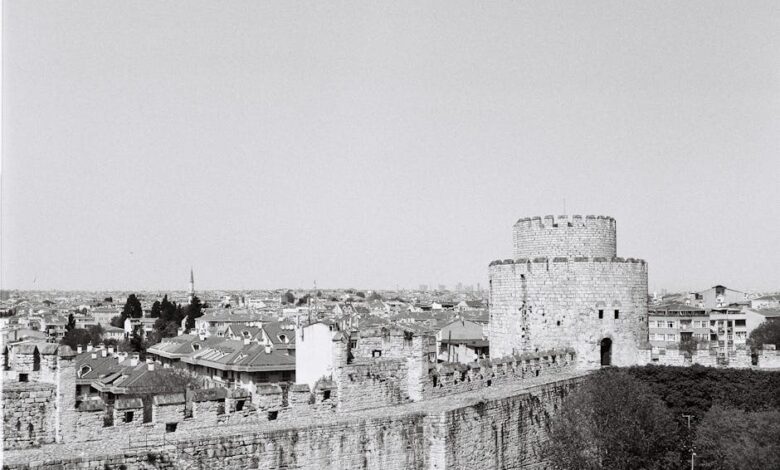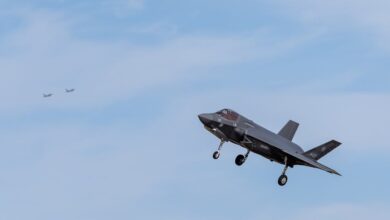Tackling the Open-World Challenge: OW-VISCap’s Broad Reach

The world we live in isn’t a controlled laboratory experiment. It’s dynamic, unpredictable, and constantly throwing new information our way. For artificial intelligence, especially in the realm of computer vision, this “open-world” scenario presents one of the most significant hurdles. How do you build an AI system that can not only understand what it has been taught but also adapt, identify, and even describe objects it has never encountered before?
This isn’t just an academic question; it has profound implications for everything from autonomous vehicles navigating unexpected obstacles to security systems identifying novel threats. This is precisely the challenge that researchers from the University of Illinois at Urbana-Champaign have taken on with their groundbreaking work on OW-VISCap. They’ve developed an approach that bridges the gap between seeing, understanding, and even describing the unseen in real-time video.
My interest was immediately piqued by their approach, especially how they’ve tackled the rigorous benchmarking of OW-VISCap across a spectrum of video understanding tasks. It’s one thing to propose a novel architecture; it’s another entirely to demonstrate its robust performance against the complexities of the real world. Let’s dive into how OW-VISCap is setting new standards.
Tackling the Open-World Challenge: OW-VISCap’s Broad Reach
The brilliance of OW-VISCap lies in its ambition to simultaneously address three distinct, yet interconnected, video understanding tasks: open-world video instance segmentation (OW-VIS), dense video object captioning (Dense VOC), and closed-world video instance segmentation (VIS). Think about that for a moment. It’s not just identifying an object, or drawing a box around it, or even tracking it. It’s doing all of that, *and* describing it, *and* doing it for objects it hasn’t been explicitly trained on.
What makes this even more compelling is that there isn’t a dedicated, unified dataset for open-world video instance segmentation and captioning. The team had to meticulously evaluate different aspects of their approach using existing benchmarks, each designed for a specific facet of video understanding. For OW-VIS, they leaned on the challenging BURST dataset. For dense video object captioning, it was VidSTG, adapted to handle missing captions. And for the more traditional closed-world video instance segmentation, they used the OVIS dataset.
This multi-faceted evaluation strategy is crucial. It ensures that OW-VISCap isn’t just a one-trick pony but a versatile tool capable of handling the diverse demands of modern computer vision applications. It’s about building an AI that’s not only smart but also street-smart.
Benchmarking Performance: A Deep Dive into the Results
So, how did OW-VISCap fare when put to the test? The results are genuinely impressive, particularly when considering the inherent difficulties of open-world scenarios.
Open-World Video Instance Segmentation (OW-VIS) on BURST
On the BURST dataset, which specifically tests an AI’s ability to handle novel objects, OW-VISCap truly shines. The researchers report a significant improvement in open-world tracking accuracy, especially for “uncommon” categories – those objects that the model likely hasn’t seen extensively during training. It achieved state-of-the-art performance, surpassing the next best method (Mask2Former+DEVA) by a substantial margin of approximately 6 points on the validation data and 4 points on the test data. This is a big deal because it demonstrates a real leap forward in an AI’s capacity to generalize and adapt to the unknown. For “common” categories, OW-VISCap still secured a respectable second place, showcasing its robust overall performance.
What I find particularly fascinating here is the use of a SwinL backbone and DEVA for temporal association. These architectural choices clearly play a pivotal role in enabling OW-VISCap’s superior tracking capabilities, especially across varying object familiarities.
Dense Video Object Captioning (Dense VOC) on VidSTG
Moving to the task of dense video object captioning, OW-VISCap once again demonstrated its prowess. It outperformed DVOS-DS on captioning accuracy (CapA), indicating its ability to generate more precise and contextually relevant object-centric descriptions. This is attributed to its innovative captioning head, which incorporates masked attention – a technique we’ll delve into shortly.
Another critical distinction here is that OW-VISCap operates as an *online* method, processing short video clips sequentially. This stands in stark contrast to many *offline* methods, like DVOS-DS, which require entire object trajectories and can’t handle long videos. The ability to process very long videos, thanks to its online nature and efficient clip-based processing (using a clip-length of T=2), is a massive practical advantage. Imagine real-time surveillance or live-event analysis – online processing is non-negotiable.
Closed-World Video Instance Segmentation (VIS) on OVIS
Even in the more traditional closed-world setting, where open-world queries are disabled, OW-VISCap showed strong performance on the OVIS dataset. Here, the researchers highlighted the positive impact of the inter-query contrastive loss (cont). This loss function demonstrably improved results, emphasizing its role in refining object detection and segmentation even when dealing with known categories.
Under the Hood: The Power of Ablation Studies
The main results are impressive, but to truly understand *why* OW-VISCap works so well, we need to look at the ablation studies. These experiments carefully isolate individual components to reveal their specific contributions. It’s like disassembling a complex machine to understand the function of each crucial part.
Masked Attention: Precision in Captioning
The captioning head’s effectiveness is largely due to its masked attention mechanism. In a fascinating set of experiments, the team showed just how vital this component is. Without masked attention, where the entire image feature is used, captioning accuracy (CapA) plummeted by a massive 23 points. This powerfully demonstrates that simply concatenating object queries with text embeddings isn isn’t enough for object-centric focus.
They also explored “bounding box captioning,” where images are cropped to the object’s bounding box. While this improved CapA compared to the ‘no masked attention’ scenario, it still lagged 5 points behind OW-VISCap’s full approach. Why? Because while it isolates the object, it loses the broader context of the entire image. Even “enlarged bounding box captioning,” which tried to provide more context by expanding the bounding boxes by 10%, still saw a 3-point drop in CapA. This highlights a crucial insight: for effective object captioning, you need *both* object-centric focus *and* holistic scene context. OW-VISCap achieves this balance by retaining overall context via self-attention and focusing on object features with masked cross-attention.
Contrastive Loss: Sharpening Object Detection
The contrastive loss (cont) is another unsung hero in OW-VISCap’s architecture. Its impact was evident in detecting both common and uncommon object categories, improving performance by about 2 points across the board. The researchers note its dual benefit: helping to remove highly overlapping false positives in closed-world settings and, more importantly, aiding in the discovery of entirely new objects in open-world scenarios.
This finding reinforces the idea that robust learning often comes from subtle, yet powerful, loss functions that encourage models to differentiate more effectively between similar concepts or to better cluster distinct ones. It’s a testament to thoughtful architectural design.
Seeing is Believing: Qualitative Insights
While numbers are important, seeing the system in action provides the most compelling evidence. The qualitative results presented in the paper paint a vivid picture of OW-VISCap’s capabilities. Figures from the BURST dataset reveal its ability to simultaneously detect, track, and caption objects within video frames, whether those objects are familiar or completely novel.
What’s truly remarkable is that the captioning head, trained on the Dense VOC task (VidSTG), proved effective in generating meaningful object-centric captions even for objects it had never explicitly seen during its training on BURST. This is generalization at its finest – a model learning concepts and applying them creatively to new situations. Similarly, examples from the VidSTG data showcase its consistent detection, tracking, and generation of meaningful captions for each identified object.
This ability to seamlessly integrate detection, tracking, and natural language description for both known and unknown entities positions OW-VISCap as a significant step towards more human-like video understanding. It’s not just recognizing a cat; it’s recognizing *that* specific cat, tracking it through a scene, and describing its actions, even if it’s a breed the system hasn’t encountered before.
The Path Forward for Intelligent Video Understanding
The work on OW-VISCap by Anwesa Choudhuri, Girish Chowdhary, and Alexander G. Schwing is a testament to the continuous innovation in computer vision and deep learning. By robustly benchmarking their approach across open-world video instance segmentation, dense video object captioning, and closed-world video instance segmentation, they haven’t just created a new model; they’ve pushed the boundaries of what’s possible in dynamic, real-world AI applications.
The insights gleaned from their experiments – particularly the critical roles of masked attention in captioning and contrastive loss in detection – offer invaluable lessons for future research. As AI systems increasingly move out of controlled environments and into our messy, unpredictable world, solutions like OW-VISCap will be vital. They promise a future where AI can truly see, understand, and articulate the complexities of our visual world, making intelligent machines more perceptive and helpful than ever before.





